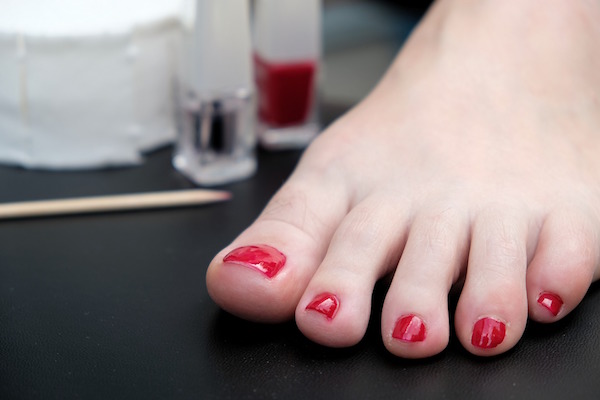Why An Ingrown Toenail Might Require Surgery | Surgical Associates of Cleveland

Ingrown toenails are a huge pain in the foot, right? Here at Surgical Associates of Cleveland, this is just one of the many painful conditions we treat. Let’s talk about the causes, symptoms, and what you can do if you develop the problem.
The Symptoms
Although any toe can be affected, most ingrown nails occur in the big toe. The earliest signs of an ingrown toenail include swelling and tenderness. If it becomes infected, it will get red and feel quite sore. Sometimes the infection leads to pus draining from the infection.
The Causes
Ingrown nails happen when the skin on the sides of a nail grows over the edges of the nail, or when the nail grows into the skin. This typically happens from wearing shoes that are too tight or too short, or from improperly trimming your nails. However, some people are just naturally prone to the problem because their toenail is too large for their toe. Finally, injuries can lead to an ingrown nail–say if someone stubs their toe or drops something heavy on their foot and causes trauma to the nail bed.
Learn how to trim your toenails the right way.
Prevention
Avoid trimming your toenails too short, especially on the sides of your big toes. It’s best to trim them straight across rather than curving them with the shape of your toe.
Nonsurgical Treatment
If you treat an ingrown toenail early before infection sets in, home care may be effective and prevent the need for further medical care.
Here’s what you can do:
- Soak your foot in warm water 3-4 times a day.
- Keep your foot dry when it’s not soaking.
- Always wear comfy shoes with room in the toe box.
- You might want to wear sandals until your condition improves.
- If it’s causing you pain, take ibuprofen or acetaminophen for relief.
- If the nail keeps digging into your skin, try lifting the edge of your ingrown nail and place cotton beneath the nail and on top of your skin. Change the cotton daily.
- If you find no improvement after three days, or it gets worse, call a doctor.
Surgical Treatment
An infection should be treated by a medical professional. In addition to prescribing oral antibiotics, they may recommend the nail be partially or completely removed surgically. Depending upon the actual infection, they might also remove some of the nail bed and soft tissues to avoid recurrent infection. Surgery will effectively prevent the nail edge from growing into skin. A permanent removal of the nail might be best for people with chronic and recurrent infections.
If you’re battling an infected ingrown toenail, we have great news–we can help you right here in Cleveland! Visit our website today or give us a call to schedule your appointment.
